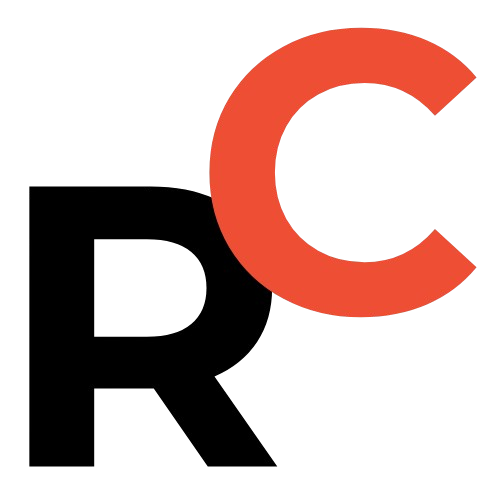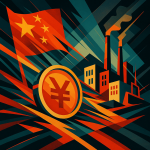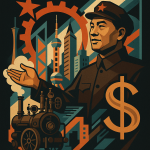Ever wonder what’s cooking in the Chinese tech IPO kitchen?
Well, let’s dive into the fascinating world of A-share IPO submissions, particularly the June 2025 surge, and see what signals it sends to investors, founders, and tech enthusiasts.
Key Points
- The A-share IPO application submissions saw a significant surge in June 2025, with 152 applications accepted, accounting for a massive 84% of the total 180 accepted in the entire first half of 2025.
- June is a traditional peak season for IPO applications in China due to the expiration of annual financial data on June 30, requiring companies to submit before then to avoid costly financial report supplements.
- The surge is driven by a strategic push to support high-quality, unprofitable technology companies and a more lenient listing environment for tech, with a focus on “hard technology” (AI, robotics, semiconductors, new energy, biomedicine).
- Despite the June 2025 surge, the total IPO acceptances in the first half of 2025 (180) are considerably lower than H1 2023 (596) and H1 2022 (571), indicating it’s not a return to previous roaring markets.
- The Beijing Stock Exchange (Beijiao Suo 北交所) is dominating recent IPO acceptances, making up 64% of the total in H1 2025 (116 IPOs) due to its focus on “specialized, sophisticated, distinctive, and innovative” (Zhuan Jing Te Xin 专精特新) SMEs.

Alright, let’s talk numbers.
The A-share Initial Public Offering (IPO) application submissions really
skyrocketed
in June 2025.
This isn’t just a slight uptick; it’s a full-blown surge.
Data shows that on June 30 alone,
a whopping 43 IPO applications were accepted
by the Shanghai (Shanghai Stock Exchange), Shenzhen (Shenzhen Stock Exchange), and Beijing (Beijing Stock Exchange) stock exchanges.
And if you thought that was a lot, consider these two days:
June 26 and June 27 saw 18 IPO applications accepted each.
So, tallying it all up,
a grand total of 152 IPO applications were accepted throughout June (2025).
Now, let’s zoom out a bit.
In the first half of 2025,
180 IPO applications were accepted in total.
Do the math, and you’ll see something pretty wild:
the number of IPOs accepted by the three major exchanges in June alone accounted for a massive 84%
of the entire first half of the year’s total.
🤯 That’s a staggering concentration of activity!
So, what’s going on?
Why this sudden rush?
And what does it mean for the future of A-share IPOs?
Let’s break it down.
June: A Traditional Peak Season for Chinese IPO Applications
The recent surge in A-share IPO application acceptances isn’t just random.
It’s a mix of strategic policy shifts, predictable calendar effects, and a deliberate push by the capital market to boost technological innovation.
Policy Unleash & Brokerage Buzz
According to a brokerage’s investment banking department head who spoke to
The Paper (Pengpai Xinwen 澎pai News)
, this warming in IPO activity is palpable.
“Our company’s investment banking department has no idle personnel,” they said.
“After waiting for more than a year, they finally received the green light, and the industry is highly motivated.”
However, it’s not an open floodgate just yet.
The head pointed out that there are
still restrictions
on:
-
Industry
-
Corporate attributes
-
Performance criteria
So, while the gates are open, they’re “still relatively narrow.”
The Calendar Effect: Why June is Peak IPO Season
Several experts confirmed that June has always been a hotspot for IPOs.
Wang Jiyue (Wang Jiyue 王骥跃), a seasoned investment banking professional, told
The Paper (Pengpai Xinwen 澎pai News)
that it’s a historical pattern.
Why?
Because after June 30, annual financial data expires.
If applications aren’t accepted by then, companies would need to
supplement their financial reports
— a costly and time-consuming process.
So, a mad dash in the last few days of June is totally normal.
Tom Tang (Tang Zhehui 汤哲hui), Co-Managing Partner of Audit Services Market for EY Greater China, echoed this, stating, “June is a traditional peak period for IPO applications.”
Tech Takes Center Stage: The Innovation Push
Beyond policies and calendars, there’s a strategic play here.
Tang noted that this “acceptance wave” signals market confidence that
deepening the
registration-based IPO
system reform
will unlock more institutional dividends.
Big news out of China!
Since March 2025, the China Securities Regulatory Commission (CSRC) has been openly pushing to support the listing of
high-quality unprofitable technology companies.
Plus, the cautious
resumption of applying the fifth set of standards
for the STAR Market (Kechuang Ban 科创板) means that the A-share capital market is gearing up to offer a more lenient listing environment for tech companies.
This is huge for tech founders and investors!
Tang observed that A-share IPO applicants are heavily concentrated in
strategic sectors.
We’re talking “hard technology” projects in fields like:
-
Artificial intelligence
-
Robotics
-
Semiconductors
-
New energy
-
Biomedicine
This clearly shows the A-share capital market’s commitment to China’s national strategy of supporting
innovation-driven development.

Find Top Talent on China's Leading Networks
- Post Across China's Job Sites from $299 / role
- Qualified Applicant Bundles
- One Central Candidate Hub
Your First Job Post Use Checkout Code 'Fresh20'

IPO Applications in H1 2022 and 2023 Exceeded This Year’s Figures
While June 2025 felt like a massive surge, it’s all about perspective.
Wang Jiyue (Wang Jiyue 王骥跃) points out that this seemingly massive “acceptance wave” is mostly notable when compared to last year’s stagnation.
In absolute terms, the first half of 2025’s IPO acceptances are still lower than the long-term average.
Most of the activity is concentrated on the Beijing Stock Exchange (Beijiao Suo 北交所), while Shanghai and Shenzhen are still “sluggish” by comparison.
Let’s look at the historical data:
-
First Half of 2023:
A whopping
596
A-share IPOs were accepted!
- 195 on Shanghai Main Board
- 141 on Shenzhen Main Board
- 66 on STAR Market (Kechuang Ban 科创板)
- 109 on ChiNext Board (Chuangye Ban 创业板)
- 85 on Beijing Stock Exchange (Beijiao Suo 北交所)
-
First Half of 2022:
Even more impressive,
571
A-share IPOs accepted.
- 84 on Shanghai Main Board
- 73 on Shenzhen Main Board
- 111 on STAR Market (Kechuang Ban 科创板)
- 186 on ChiNext Board (Chuangye Ban 创业板)
- 117 on Beijing Stock Exchange (Beijiao Suo 北交所)
So, while June 2025 was a burst of energy, it’s not quite a return to the roaring IPO markets of 2022 and 2023.
But it’s definitely a significant improvement from 2024.

ExpatInvest China
Grow Your RMB in China:
- Invest Your RMB Locally
- Buy & Sell Online in CN¥
- No Lock-In Periods
- English Service & Data
- Start with Only ¥1,000

Beijing Stock Exchange IPO Submissions “Far Ahead”
Here’s where it gets really interesting for those tracking specific market segments.
The
Beijing Stock Exchange (Beijiao Suo 北交所)
is totally dominating the recent IPO acceptance landscape.
Let’s look at the numbers:
-
Of the 43 IPOs accepted on June 30,
32
were for the Beijing Stock Exchange (Beijiao Suo 北交所). -
Out of the 152 IPOs accepted throughout June,
97
were for the Beijing Stock Exchange (Beijiao Suo 北Jiao Suo 北京证券交易所). -
For IPO projects accepted in the first half of 2025, the Beijing Stock Exchange (Beijiao Suo 北交所) accepted
116 IPOs
, making up
64%
of the total 180 across the entire market.
That’s a huge lead!
The brokerage investment banking department head explained why:
“Currently, the Shanghai and Shenzhen exchanges still have clear guidelines for IPOs, primarily promoting high-tech and large consumer companies.”
Specifically, the main board not only requires industry blue chips and segmented leaders but now also includes a “big consumption” qualifier.
For big consumer companies to list on the main board, their profits need to be at least
¥200 million-300 million RMB ($27.5 million-41.3 million USD).
This high bar limits the number of companies that can qualify for Shanghai and Shenzhen.
Wang Jiyue (Wang Jiyue 王骥跃) noted that the pace of IPOs is closely tied to market sentiment.
The Beijing Stock Exchange (Beijiao Suo 北交所) index actually
led global gains in the first half of the year
, surging by
39.45%
according to Wind data.
This strong performance indicates high market demand, making increased acceptances totally normal.
Tang further emphasized that the Beijing Stock Exchange (Beijiao Suo 北交所) has become the main engine for current IPO applications because it’s strategically positioned to serve “specialized, sophisticated, distinctive, and innovative” (Zhuan Jing Te Xin 专精特新) small and medium-sized enterprises.
This aligns perfectly with China’s policy support for these innovative SMEs.
Case in point:
Over 60%
of the pre-listing advisory companies accepted in 2025 plan to list on the Beijing Stock Exchange (Beijiao Suo 北交所).
As these “Zhuan Jing Te Xin” (专精特新) enterprises connect more with the capital market, we can expect a continued surge in accepted applications for the Beijing Stock Exchange (Beijiao Suo 北交所) throughout the year.

Resume Captain
Your AI Career Toolkit:
- AI Resume Optimization
- Custom Cover Letters
- LinkedIn Profile Boost
- Interview Question Prep
- Salary Negotiation Agent

“Acceptance Wave” Does Not Mean “Issuance Wave”
- Macroeconomic environment
- Market funds
- Quality of prospective listed companies
The surge in IPO acceptances has definitely put investment banking employees back in high gear.
“Many investment banking department employees, including those at our company, have already gone out to pursue projects,” said the brokerage investment banking department head.
“Because the future situation is still unpredictable, everyone wants to seize the first wave of projects during the current window period.”
However, while the flood of acceptances is exciting, experts are quick to temper expectations.
Multiple interviewees stressed that an “acceptance wave” doesn’t automatically translate to an “issuance wave.”
Wang Jiyue (Wang Jiyue 王骥跃) clarifies:
-
The acceptance wave has no
direct correlation
with the number of actual IPOs. -
In the past, many accepted applications were
subsequently withdrawn.
-
“Acceptance” simply means the application was
received and acknowledged.
“A-share IPOs already ‘opened’ in the second half of last year, just not in a normalized manner,” Wang Jiyue said. “In general, acceptance does not fully represent the pace of issuance.”
Tang agrees that an “acceptance wave” does not imply an “issuance wave.”
The new stock issuance in the A-share capital market is expected to remain stable and positive, entering a “new normalization.”
This “new normalization” isn’t a return to rapid expansion, but rather a “rhythmic” and “new normal” issuance paced by the market’s capacity.
Key factors influencing the IPO issuance pace will be:
-
Macroeconomic environment
-
Market funds
-
Quality of prospective listed companies
The brokerage investment banking department head summarized the current focus for Shanghai and Shenzhen exchanges:
-
“Innovation and creation” (shuangchuang 双创)
: Primarily promotes high-tech companies on the STAR Market (Kechuang Ban 科创板) and ChiNext Board (Chuangye Ban 创业板), including the re-activation of the fifth standard for the STAR Market (Kechuang Ban 科创板) targeting “hard technology” enterprises. -
Main board focus
: Primarily promotes large consumer companies, with other industries on the main board still largely untapped for IPOs.
The bottom line, as Tang concluded, is clear:
“The ‘window period’ for A-share IPO applications has indeed arrived.”
This is prime time for investors, founders, and anyone tracking Chinese tech.
Keep it real, keep it informative, keep it fresh, keep it engaging.

References
- June A-share IPO Submissions Surge, What Signals Are Being Sent? – The Paper (Pengpai Xinwen 澎pai News)
- EY’s China IPO and Divestment Market Survey in the First Half of 2024 Sees Continued Optimization of the Registration-Based IPO System – EY
- China’s IPO market likely to steady in H2 2024 as stricter supervision boosts investor confidence: EY – South China Morning Post


![STAR Market Pharma 2024 Report Card: Profit Growth for 53%, R&D Spend Hits ¥350M Average [FreshFromChina]](https://freshfromchina.com/wp-content/uploads/2025/05/STAR_Market_Pharma_2024_Report_Card__Profit_Growth_for_53___R_D_Spend_Hits_350M_Average____FreshFromChina-150x150.png)

